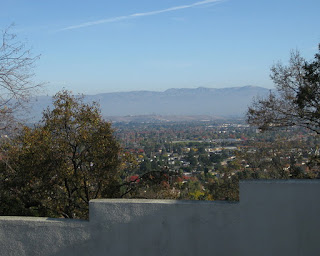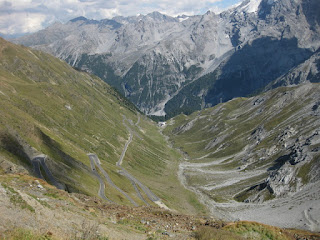Being in rather fine health, I had been fortunate not to spend a single night in a hospital since I was a toddler. Until now.
I know my body pretty well, and on Friday afternoon I knew that something was wrong.
Cardiac symptoms in women can be unusual, and I knew it was imprudent to ignore my discomfort. At the end of the day, I got a ride home, and drove myself to the local hospital emergency room.
Having done this drill with a friend a year or so ago, I expected a similar outcome: they would do an EKG, blood tests, chest x-ray, reassure me that my heart was fine, and send me home.
Little could I know that I was about to become a hostage.
EKG. Blood drawn. Chest x-ray. Nitroglycerin? [Hmm.]
Morphine? [Whoa, the pain is not that severe.] Routine, the nurse explains; it helps to dilate your blood vessels.
Enter Dr. 1, test results in hand. Recognizing my phone, he chatters on about the pros and cons of Androids and iPhones, and problems with local carriers. Drug-induced haze or not, this was surreal. After ten minutes, he turns to my EKG results, in which he sees something unfamiliar that he thinks the cardiologist should review. [Uh oh.]
Enter Dr. 2, the Admitting Physician. In his introductory monologue, he announces that he had written Chapter 1 in some medical text or other, about triage. [This is playing out like a
David Lynch movie.] He is sure the cardiologist will want to do a stress test. He is sure that will be a waste of time and show nothing. [Flash back to the
Stelvio Pass last summer, as I peppered the cardiologist in our group with questions.
What you just did was much harder than any stress test we could administer. You are fine.]
Meet Roommate 1, upstairs on the cardiac floor. Elderly stroke survivor, gravely ill, relocated to cardiac intensive care the next morning. With all manner of truly horrifying sounds, beeping equipment, and a horde of people attending to her, I might have gotten an hour of sleep.
Lesson 1: Get that Advance Health Care Directive done. Years down the road, I must not be the woman on the other side of that curtain.
Enter Dr. 3, the Cardiologist. When I describe my symptoms, he is visibly annoyed. Evidently I am wasting his time with my non-classic symptoms. He orders a CT scan to check my aorta before we attempt a stress test.
Enter Nurse, one of many. Time to take your meds. What meds, I ask? She rattles off a list of five or more, all of which I challenge. My blood pressure is normal [quite healthy, in fact]; why would you give me medication to lower it? All prescribed by Dr. 2; she checks with Dr. 3, who agrees none of the meds are needed.
Lesson 2: Ask questions before you swallow. You can refuse medication.
That CT scan was quite fortuitous, as it revealed the likely source of Friday's pain. My aorta, and my heart, are fine. The stress test was boring; they stopped it at 173 bpm (ha!), considering that "104% of normal" for my age. [Don't get me started.]
Now you would think: it is time to go home. There is no reason why I should still be hooked to a cardiac monitor and intravenous saline drip.
Dr. 2 appears, spreading FUD [fear, uncertainty, and doubt]. You need to talk to the surgeon before we can release you. Poking and prodding, he is perplexed that I don't even wince.
Dr. 3 proclaims the the health of my cardiovascular system. Cleared for surgery.
I want to go home, I say. That's up to Dr. 2, he wants you to talk to the surgeon.
Enter Dr. 4, the Surgeon. [More pain-free poking and prodding.] Yes, I believe what the CT scan found. No, I do not want surgery today. No, I do not want surgery tomorrow. I want to schedule it. [More FUD.] I will not procrastinate.
Dr. 4 fails to inform Dr. 2 that we have spoken. Dr. 2 ends his shift and refuses to release me.
Lesson 3: You can check out any time you want. Your insurance will not pay the bill. (I did not test this.)
I am a prisoner.
You want to go home? Bwahaha. Just confess! er, we mean consent!
Through another night of beeping, voices, bright lights, refused meds, and one more unnecessary blood draw, I resolve to try a new tactic.
It is time to charm my captors. Thank them for their solicitous oversight. Assure them I feel fine. [Request nothing for that caffeine-withdrawal headache, lest they order a brain scan.] Click my ruby slippers.
There's no place like home. There's no place like home ...
And home I am, at last—my left arm tracked with the pricks and bruises of four intravenous shunts (including one aborted attempt), my right arm bruised and swollen from countless blood draws.
How much did that second, completely unnecessary night on the cardiac ward cost? [Postscript: $3200 just for the room; associated charges, unknown.]
 After last weekend, being out on my bike felt like a celebration (with overtones of rebellion). I hope to enjoy a few more weeks before I will necessarily take a break from my routine.
After last weekend, being out on my bike felt like a celebration (with overtones of rebellion). I hope to enjoy a few more weeks before I will necessarily take a break from my routine.

















































